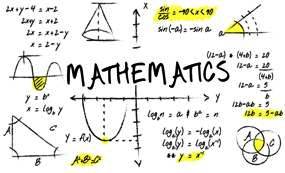Then I had another thought: Physics disgusts me a little bit now, but I used to enjoy doing physics. Why did I enjoy it? I used to play with it. I used to do whatever I felt like doing - it didn't have to do with whether it was important for the development of nuclear physics, but whether it was interesting and amusing for me to play with. When I was in high school, I'd see water running out of a faucet growing narrower, and wonder if I could figure out what determines that curve. I found it was rather easy to do. I didn't have to do it; it wasn't important for the future of science; somebody else had already done it. That didn't make any difference. I'd invent things and play with things for my own entertainment.
So I got this new attitude. Now that I am burned out and I'll never accomplish anything, I've got this nice position at the university teaching classes which I rather enjoy, and just like I read the Arabian Nights for pleasure, I'm going to play with physics, whenever I want to, without worrying about any importance whatsoever.
Within a week I was in the cafeteria and some guy, fooling around, throws a plate in the air. As the plate went up in the air I saw it wobble, and I noticed the red medallion of Cornell on the plate going around. It was pretty obvious to me that the medallion went around faster than the wobbling.

I had nothing to do, so I start to figure out the motion of the rotating plate. I discover that when the angle is very slight, the medallion rotates twice as fast as the wobble rate - two to one [Note: Feynman mis-remembers here---the factor of 2 is the other way]. It came out of a complicated equation! Then I thought, "Is there some way I can see in a more fundamental way, by looking at the forces or the dynamics, why it's two to one?''
I don't remember how I did it, but I ultimately worked out what the motion of the mass particles is, and how all the accelerations balance to make it come out two to one.
I still remember going to Hans Bethe and saying, "Hey, Hans! I noticed something interesting. Here the plate goes around so, and the reason it's two to one is ...'' and I showed him the accelerations.
He says, "Feynman, that's pretty interesting, but what's the importance of it? Why are you doing it?''
"Hah!'' I say. "There's no importance whatsoever. I'm just doing it for the fun of it.'' His reaction didn't discourage me; I had made up my mind I was going to enjoy physics and do whatever I liked.
I went on to work out equations of wobbles. Then I thought about how electron orbits start to move in relativity. Then there's the Dirac Equation in electrodynamics. And then quantum electrodynamics. And before I knew it (it was a very short time) I was "playing'' - working, really - with the same old problem that I loved so much, that I had stopped working on when I went to Los Alamos: my thesis-type problems; all those old-fashioned, wonderful things.
It was effortless. It was easy to play with these things. It was like uncorking a bottle: Everything flowed out effortlessly. I almost tried to resist it! There was no importance to what I was doing, but ultimately there was. The diagrams and the whole business that I got the Nobel Prize for came from that piddling around with the wobbling plate.
So, my hat off to all of you that know how to play!
Let the 4th be with you!
Blog by Ingrid Wood

